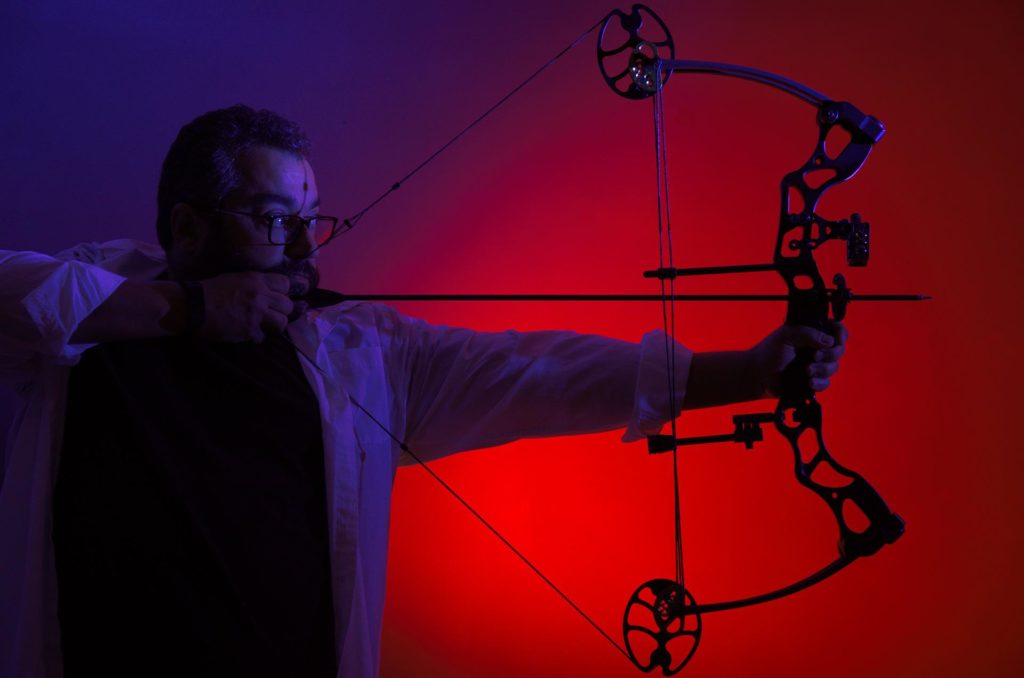There are mainly three types of bows that archers use: recurve, compound, and crossbow. Each comes with its perks and disadvantages.
Have you seen archery in the Olympics? Then you’ve probably seen the bows that the archers use. These are called compound bows. Don’t they look amazing?
If you have decided on getting a compound bow to start practicing archery after watching them shoot incredible shots, then you should know what you need to avoid doing with your compound bow. You’ll be thanking yourself later.
What Is a Compound Bow?
A compound bow is used in modern archery for target practice and hunting. It consists of a system made of strings and pulleys to bend the bow and fix the shot.
A compound bow is much more compact and shorter than traditional bows. While a basic compound bow only consists of the levering system, a professional, comprehensive compound bow comes with many other gears such as a release-aid, peep sight, fiberoptic sight, etc.
Although you may be planning to buy one or are already practicing with one, there are things that you should avoid doing to your compound bow so that it lasts longer.
Using It Without Proper Knowledge

Using a compound bow without having proper knowledge of its parts and how to use it can be disastrous and quite costly. While some compound bows come with all the parts included in their boxes, others only come as just the bow with the cables and cams.
If you’re a beginner, you need to know beforehand the parts that you need to practice and hunt effectively with a compound bow.
You can check out Bowaddicted to get guidelines on using your compound bow and which will be the best ones for you.
Starting Overbowed
You shouldn’t take a bow heavier than the weight that you can lift easily, which means the weight of the draw shouldn’t be greater than what you can take.
If the draw weight is heavier than your wrist can hold, the bow will tremble, and you’ll not be able to balance it. If you shoot an arrow in this situation, you’ll misfire, or you may even get hurt.
Not Tuning the Draw Length
One of the advantages of a compound bow is you can adjust its draw length and draw strength according to your comfort. However, this is a common mistake that many archers make when using this bow for the first time.
Another thing you should avoid is getting a compound bow whose draw length is greater than the length of your arms or shorter than that.
Get the draw length adjusted by a professional according to your maximum stretch, as there are a lot of bolts and screws to work with.
Along with the length of the string, they can also adjust the tightness of the bow with an Allen wrench for maximum performance.
Dry Firing Your Compound Bow
What does dry firing mean? It’s when you draw the bowstring and release it without an arrow.
Drawing the string produces a great tension, which needs a proper release. Without an arrow, the energy from your arms will transfer entirely to the bow and string, which will damage them badly. You don’t want that, right?
Using Arrows That Don’t Match Your Bow’s Quality
It’s crucial that you use arrows that match the quality and specifications of your bow if you want your bow to function correctly.
An arrow will only perform well if it matches your bow. Otherwise, the bow may slip or break.
Not Maintaining It Properly
You sometimes will need professionals to fix and maintain your compound bow. An expert will understand how tight the string should be or how long it should be able to stretch after examining your physique thoroughly against the bow. They may also recommend you a better bow option.
Compound bows need proper maintenance if you want them to last you for years. And if you fall in a situation where you need to fight as well as survive, then compound bows are the better choice for the SHTF scenario out of all the other types of bows. But only if maintained properly.
Storing It Anywhere but Its Case
If you’re thinking that you’ll just take off the cables, disintegrate the parts and store them or carry them compactly, that won’t work. Fixing it will take an expert hand and machinery, and you don’t want to go down that expensive road.
Because of how awkwardly shaped it is, you can’t store compound bows just anywhere you like. It will end up bruising the bow badly.
You need to keep the bow in its box along with the arrows and gears. It’ll be heavier to carry, but it’s still worth it.
Using It as a Beginner
Although more accurate and faster to shoot with, compound bows can be difficult for beginners due to their structural complexity. You’ll have a terrible start to your training. Besides, it’s a good idea to build your strength and sharpen your aim with a recurve bow.
Choose a bow with draw weight and draw length that’ll resonate better with you so that you can work your way up to the strength and expertise to shoot with a compound bow. You can later adjust your compound bow to your level of expertise as you gain more experience.
With more knowledge and experience, you can upgrade to better, more stable compound bows and become a better bow hunter.
Conclusion
As fun as archery is, you need a lot of training to master the skills. Your bows back you up. In this case, to help you achieve your desired goal.
Buy the right compound bow that will match your fitness and stretch, avoid doing the things we have discussed in this article to your compound bow, and follow some safety rules. You’ll do well with your compound bow, and will get satisfactory results over the long run.